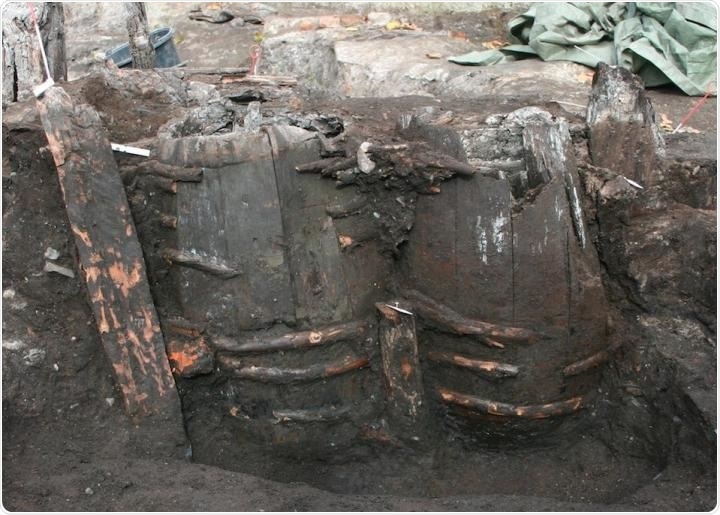Researchers from University of Copenhagen and Aarhus University have studied the DNA from parasite eggs that are recovered from the faeces samples in ancient times. These have revealed the food habits as well as the hunting behaviors and domesticated animals during that time. The study showcasing their findings appears in the latest issue of the journal PLOS ONE on 25th of April 2018.

Ancient latrines. Image Credit: Søe et al (2018)
Martin Søe of the University of Copenhagen, Denmark, and colleagues explain that there are numerous parasitic worms that infest the human gut. These lay eggs within the intestines and are then excreted in the feces. They can be transmitted from one person to another and also from domestic animals to humans and vice versa.
There have been studies where ancient fecal samples have shown parasite eggs. This new study uses DNA sequencing technology and microscopy to understand the range of species of parasites better. The team obtained these parasite egg samples from ancient latrines in Bahrain, Jordan, Denmark, the Netherlands, and Lithuania. The samples date between 500 B.C. (Bahrain) and 1700 A.D. (the Netherlands). They then used shotgun sequencing of DNA to identify the parasite species.
The pattern of parasites present in the samples showed that they mostly came from raw or undercooked pork and fish. The animals that may have passed on the parasites were also speculated to be dogs, pigs, sheep, horses and rats. They also checked for animal and plant DNA in the samples. Danish samples (1018 to 1400 A.D.), they noted had DNA from hares, roe deers and fin whales. The population there may be hunting these animals for food. They also showed large number of pork tapeworm eggs in their samples. This meant that they could be eating undercooked pork. Beef tapeworms were less frequent meaning that they could be cooking their beef better. Cabbages and buckwheat DNA was noted in large amounts in samples from Northern Europe showing an abundance of use of these as food in the regions. Northern Europeans also showed large number of fish tapeworm eggs in their samples which meant that they were mainly eating fish.
Veterinary scientist Dr. Martin Søe, lead researcher, explained that this study helped understand parasitism in ancient populations and also provided deeper insights into the diets and foraging, hunting behaviours of these populations. He said that the hygiene standards were low in many regions with large amounts of round worm and whipworm eggs recovered from the samples.
According to several experts, this is a unique study and provides clues to several puzzles from the past. Larger studies using these advanced technologies could provide more understanding.
Source: http://journals.plos.org/plosone/article?id=10.1371/journal.pone.0195481